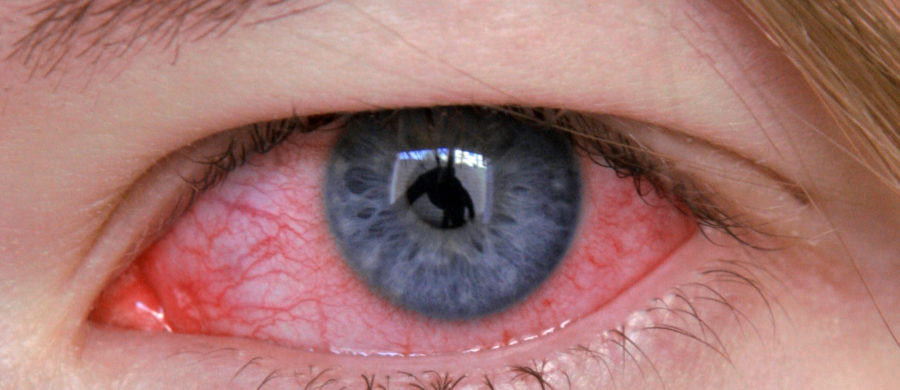What You Need to Know About Conjunctivitis: causes, symptoms, diagnosis, treatment and prevention.
What is Conjunctivitis:
Overview
Conjunctivitis, commonly known as “pink eye,” is an infection or swelling in the outer membrane of your eyeball.
Blood vessels in your conjunctiva, a thin membrane that lines part of your eye, become inflamed. This gives your eye the red or pink color that’s commonly associated with conjunctivitis.
Since bacterial or viral conjunctivitis is very contagious, it’s important to pay attention to your symptoms. The condition can be passed along to others
Talk with your healthcare provider about treatment if you experience:
- pink or red-toned eyes
- gritty feeling in your eyes
- watery or thick discharge that builds up on your eyes at night
- itchiness in your eyes
- abnormal amount of tears
The most common causes of pink eye are:
Viruses or bacteria
Bacterial conjunctivitis is most often caused by the same type of bacteria that cause strep throat and staph infections. Conjunctivitis caused by a virus, on the other hand, is usually the result of one of the viruses that cause the common cold.
Whatever the cause, viral and bacterial pink eye is considered highly contagious. It can easily be transmitted from one person to another simply by hand contact.
Allergies
Allergens, such as pollen, can cause pink eye in one or both of your eyes.
Allergens stimulate your body to create more histamines, which cause inflammation as a part of your body’s response to what it thinks is an infection. In turn, this causes allergic conjunctivitis.
Allergic conjunctivitis is usually itchy.
Chemicals
You also need to be careful if a foreign substance or chemical splashes into your eyes. Chemicals such as chlorine, found in backyard swimming pools, can cause conjunctivitis. Rinsing your eyes with water is a simple and effective way to keep a chemical irritant from causing pink eye.
It’s not hard for your healthcare provider to diagnose pink eye. They’ll be able to tell if you have pink eye simply by asking you a few questions and looking at your eyes.
For example, they might ask you if your eyes are itchy and whether you have watery or thick discharge. They might also ask if you’re experiencing symptoms of a common cold, hay fever, or asthma.
If necessary, they might take a tear or fluid sample from your conjunctiva and send it to a lab for further analysis.
Treatment of conjunctivitis depends on what’s causing it.
If your pink eye is the result of a chemical irritant, there’s a good chance it will go away on its own in a few days. If it’s the result of a bacterium, virus, or allergen, there are a few treatment options.
Bacterial conjunctivitis
For a bacterial infection, antibiotics are the most common method of treatment. Adults usually prefer eye drops. For children, however, ointment might be a better choice because it’s easier to apply.
With the use of an antibiotic medication, your symptoms will probably start to disappear in just a few days.
Viral conjunctivitis
Unfortunately, if you have viral conjunctivitis, there’s no treatment available. Just like the common cold, there are no cures for a virus. However, your symptoms will probably go away on their own in
In the meantime, using a warm compress, or cloth moistened with warm water, can help soothe your symptoms.
Allergic conjunctivitis
To treat conjunctivitis caused by an allergen, your healthcare provider will probably prescribe an antihistamine to stop the inflammation.
Loratadine (e.g., Claritin) and diphenhydramine (e.g., Benadryl) are antihistamines that are available in over-the-counter medications. They may help clear your allergic symptoms, including allergic conjunctivitis.
Other treatments include antihistamine eye drops or anti-inflammatory eye drops.
Home remedies
In addition to using a warm compresses, you can also purchase eye drops at your local drugstore that mimic your own tears. They’ll help relieve your conjunctivitis symptoms. It’s also a good idea to stop wearing contact lenses until your case of pink eye completely clears up.
Practicing good hygiene is one of the best ways to avoid and stop the transmission of conjunctivitis. Try to avoid touching your eyes with your hands, and wash your hands thoroughly and often. Only use clean tissues and towels to wipe your face and eyes.
Make sure that you don’t share your cosmetics, especially eyeliner or mascara, with other people. It’s also a good idea to wash and change your pillowcases frequently.
If your healthcare provider thinks that your contact lenses are contributing to your pink eye, they may recommend switching to another type of contact lens or disinfection solution.
They may suggest cleaning or replacing your contact lenses more frequently, or that you stop wearing contact lenses indefinitely (or at least until your eye heals). Avoiding poorly fitted contact lenses and decorative contact lenses may also decrease your risk for pink eye.
Preventing the transmission of pink eye
If you already have pink eye, you can help keep your friends and family safe by doing the following:
- Wash your hands regularly.
- Avoid sharing towels or washcloths.
- Change your towel and washcloth daily.
- Replace eye cosmetics after your infection clears.
- Follow your healthcare provider’s advice on contact lens care.
If your child has pink eye, it’s a good idea to keep them out of school for at least 24 hours after they start treatment to keep them from transmitting pink eye to others.


Comments
Post a Comment